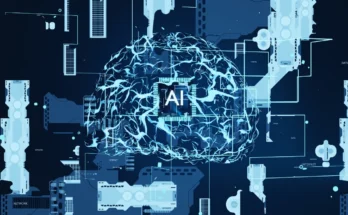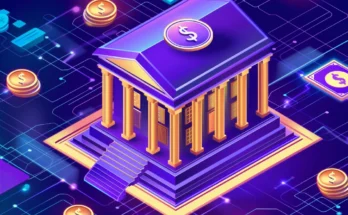The internet as we know it is on the cusp of a transformative evolution. Web3 technology is the next stage in the digital age, promising a more decentralized, user-driven internet where individuals have greater control over their data, identity, and transactions. But what is Web3 technology exactly, and how does it differ from its predecessors, Web 1.0 and Web 2.0? In this blog post, we’ll explore the foundations of Web3, its key components, and how it’s set to change the future of the internet as we know it.
Web3 represents a shift from the centralized, corporate-controlled internet to a more decentralized model powered by blockchain and peer-to-peer networks. Whether you’re a tech enthusiast or just curious about the future of the web, understanding Web3 technology is essential as it begins to reshape industries, economies, and digital experiences.
What Is Web3 Technology?
At its core, Web3 technology is the third generation of internet services. It’s built upon decentralized protocols like blockchain, allowing for peer-to-peer interactions without relying on intermediaries such as tech giants or financial institutions. Unlike Web 2.0, which focuses on creating social media platforms and user-generated content, Web3 emphasizes decentralization, data ownership, and enhanced security.
Key Features of Web3:
- Decentralization: Web3 eliminates the need for centralized entities by distributing control among network participants. This results in fewer gatekeepers and more transparency.
- Blockchain Technology: The backbone of Web3 is blockchain, which ensures transparency and security through a decentralized ledger that records every transaction.
- Digital Ownership: Web3 allows users to truly own their digital assets, including cryptocurrencies, NFTs, and more.
- Smart Contracts: Automated agreements coded into the blockchain eliminate the need for intermediaries, making transactions more efficient.
These elements collectively answer the question, “What is Web 3.0 technology?” by highlighting its primary goal: empowering users in ways that Web 1.0 and 2.0 couldn’t.
How Web3 Differs from Web 1.0 and Web 2.0
To fully appreciate Web3, it’s important to understand how it differs from earlier iterations of the web. Web 1.0 was a static, read-only web where users could only consume information, while Web 2.0 introduced user-generated content, interactive platforms, and social media.
Web 1.0 – The Information Web:
In the 1990s, the internet was primarily a collection of static websites. Users were passive consumers, and interactions were minimal. Data ownership and privacy concerns were virtually non-existent.
Web 2.0 – The Social Web:
The 2000s saw the rise of platforms like Facebook, YouTube, and Twitter. Web 2.0 allowed for greater interactivity, with users generating content and engaging with others. However, centralized platforms became dominant, leading to concerns over data privacy, censorship, and monopolization.
Web3 – The Decentralized Web:
Web3 seeks to address these concerns by giving users control over their data and digital identity. It’s not just about interaction but ownership, powered by blockchain and decentralized applications (dApps).
Real-World Applications of Web3 Technology
Web3 technology is already making waves across various industries, from finance to entertainment. One of the most exciting aspects of Web3 is its potential to disrupt traditional business models and introduce new, decentralized alternatives.
Finance and Cryptocurrency:
Perhaps the most well-known application of Web3 is in finance. Cryptocurrencies like Bitcoin and Ethereum operate on decentralized networks, allowing for peer-to-peer transactions without banks. DeFi (Decentralized Finance) platforms take this a step further, enabling lending, borrowing, and trading directly between users.
NFTs and Digital Art:
Non-fungible tokens (NFTs) have exploded in popularity, enabling artists to sell digital art with verifiable ownership. NFTs are unique, immutable digital assets stored on the blockchain, making it impossible to forge or duplicate them.
Decentralized Social Media:
Platforms like Mastodon and Minds are building decentralized social networks where users have control over their data and can interact without censorship or corporate oversight.
Gaming and the Metaverse:
Web3 is also poised to revolutionize the gaming industry. Decentralized games allow players to truly own in-game assets, such as weapons or characters, which they can trade or sell outside of the game. The rise of the metaverse—a collective virtual shared space—is closely linked to Web3, where users can experience a decentralized, immersive digital world.
Challenges and Criticisms of Web3
While Web3 technology has the potential to change the internet, it is not without challenges and criticisms. Many skeptics question whether Web3 can deliver on its promises, and there are several obstacles that need to be addressed before mass adoption occurs.
Scalability Issues:
Current blockchain technologies, like Ethereum, face significant scalability challenges. Transaction times can be slow, and fees (known as gas fees) can be prohibitively expensive during times of high network congestion.
Regulatory Uncertainty:
Governments worldwide are still grappling with how to regulate blockchain and cryptocurrencies. The decentralized nature of Web3 makes it difficult for authorities to impose controls, raising concerns about illegal activities such as money laundering.
Usability and Accessibility:
For the average internet user, Web3 technology can be confusing and difficult to navigate. The user experience for decentralized apps (dApps) is still in its infancy, with many platforms lacking the ease of use seen in Web 2.0 applications.
Environmental Concerns:
The energy consumption of blockchain technology, particularly proof-of-work systems like Bitcoin, is a major environmental concern. However, solutions like Ethereum 2.0, which uses a proof-of-stake system, aim to mitigate this issue by reducing energy consumption.
FAQs: Frequently Asked Questions About Web3 Technology
- What is Web3 technology in simple terms?
Web3 is the next evolution of the internet, where decentralization, blockchain, and user control over data play central roles. - How does Web3 differ from Web 2.0?
Web 2.0 is centralized, with companies controlling data. Web3, in contrast, uses blockchain to give users ownership and control over their data. - What are the benefits of Web3 technology?
Web3 offers enhanced privacy, security, and user empowerment by reducing reliance on intermediaries like tech giants. - Is Web3 safe?
While Web3 offers greater security through blockchain, it also faces risks like smart contract vulnerabilities and fraud in decentralized systems. - When will Web3 be widely adopted?
Web3 is still in its early stages, and widespread adoption may take several more years as technology and regulations evolve.
Conclusion: The Future of the Internet Is Web3
Web3 technology represents an exciting, user-centric future for the internet. By embracing decentralization, blockchain, and digital ownership, Web3 has the potential to empower users like never before. While there are still challenges to overcome, including scalability and regulatory issues, the possibilities of a decentralized web are boundless.
Whether you’re exploring cryptocurrencies, NFTs, or the metaverse, the rise of Web3 technology is undeniable. To stay ahead of the curve, it’s essential to understand its foundations and its potential to transform our digital world.




